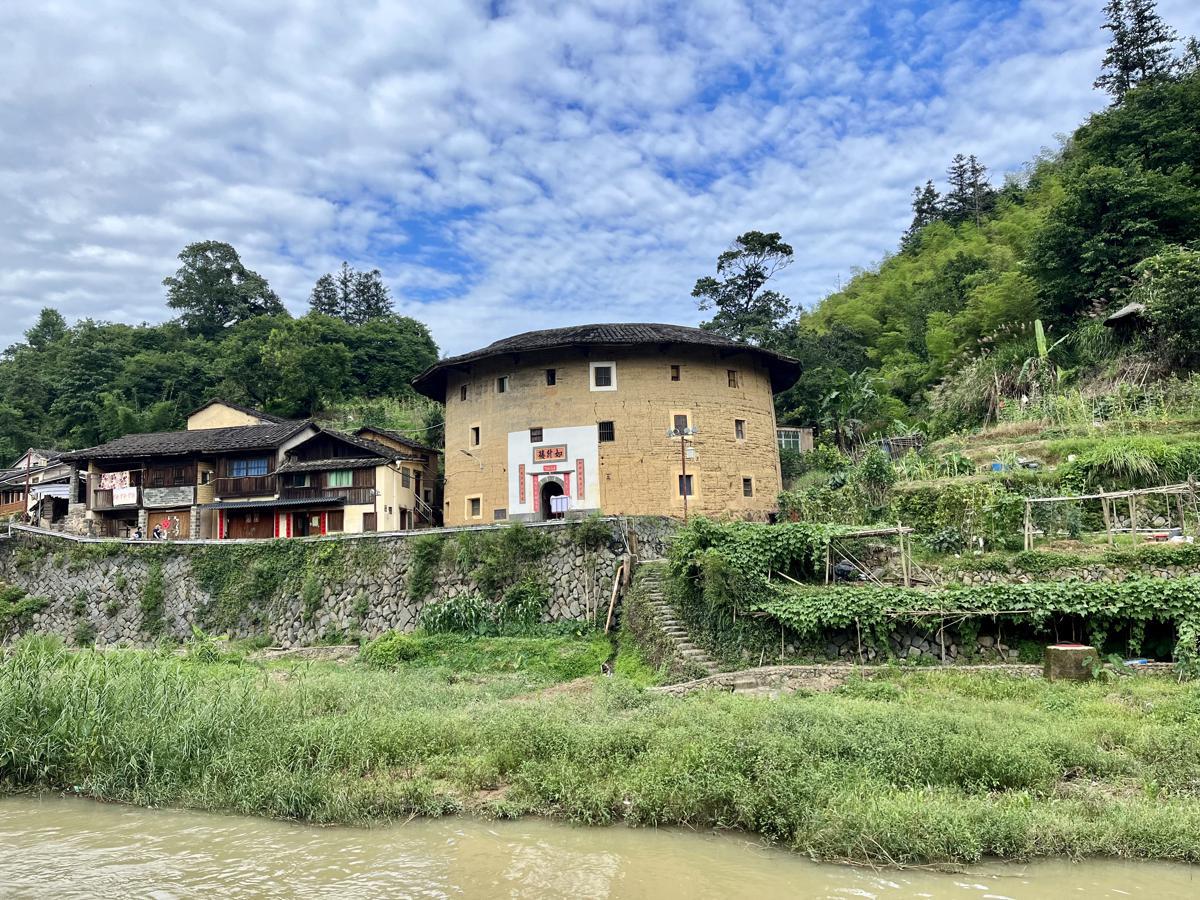Unusual ancient buildings find new life in Fujian
 Rusheng Lou is highlighted in the Chinese animated film Big Fish and Begonia. [Photo by Li Jing / chinadaily.com.cn]
Rusheng Lou is highlighted in the Chinese animated film Big Fish and Begonia. [Photo by Li Jing / chinadaily.com.cn]
The tulou in Fujian were constructed by the Hakka people, a sub-group of the Han ethnic group that fled from the north to what is now Fujian in many waves to escape conflict in the central plains. A massive migration took place in the 12th century because of warfare and social turbulence. They eventually found refuge in the mountainous areas to the south.
Thousands of tulou are scattered across Fujian, with Yongding being home to 1,768 of them.
According to historical records at the Fujian tulou museum, Yongding is known as the cradle of the communal dwellings. As the region was home to numerous skilled craftsmen, when the craftsmen migrated they carried sophisticated tulou construction techniques with them, thereby spreading the architectural knowledge to surrounding regions.
"The greatest threat to the tulou is abandonment," Lin said. "The wooden frameworks are interconnected, and if one room deteriorates, it can easily lead to the collapse of adjacent rooms. Maintaining occupancy and regular maintenance is crucial to preserving the integrity of these historic structures."
She recalled that, at the beginning of the renovation of Shengheng Lou, "the condition of the building was quite awful, except for the solid walls". The renovation addressed the structure's traditional vulnerabilities — mainly water damage — by investing heavily in waterproofing. Modern amenities like toilets were added, and fire protection systems, including sprinklers and smoke detectors, were installed. The bamboo and wood skeleton was reinforced with steel, ensuring structural integrity.




